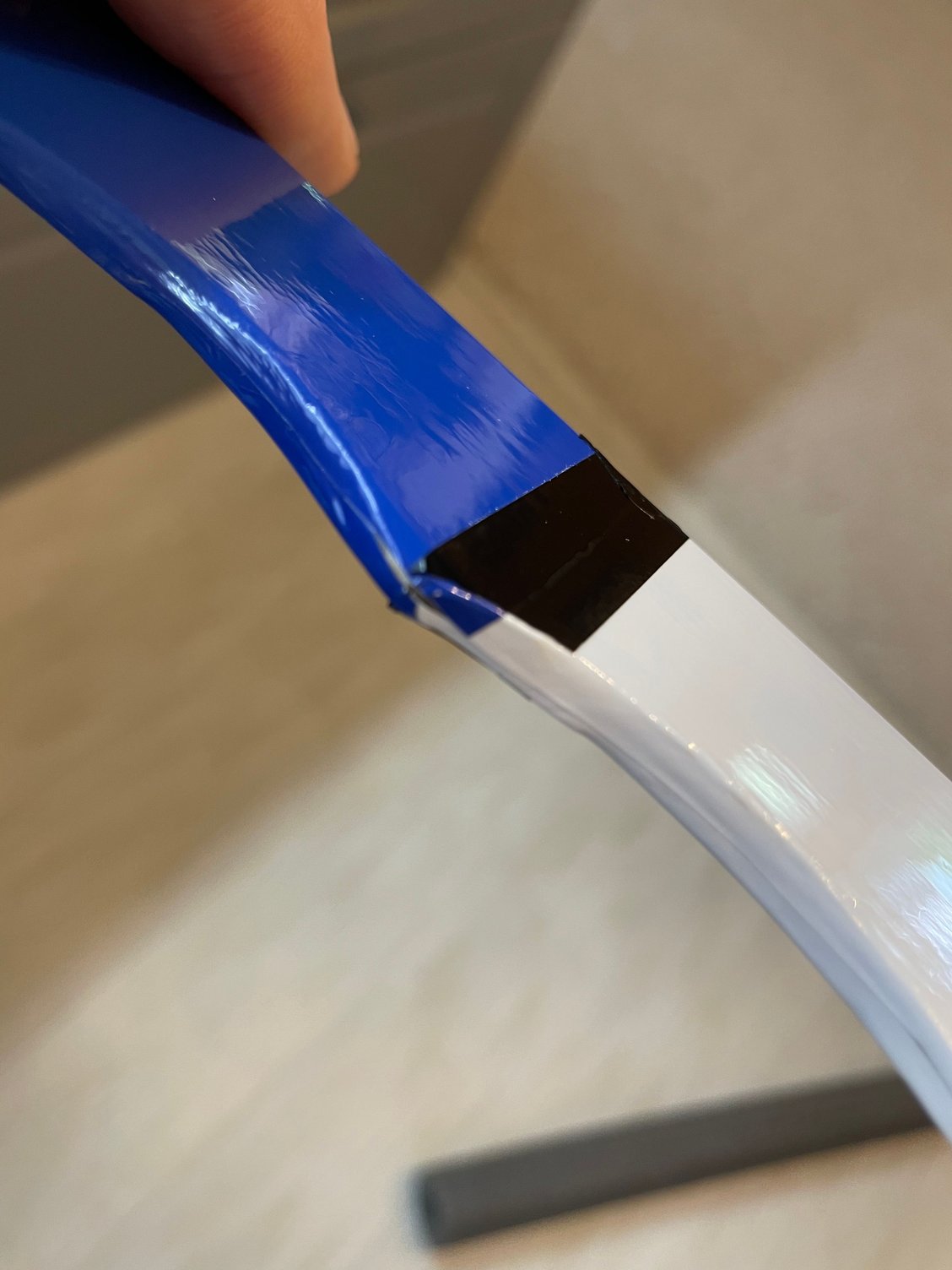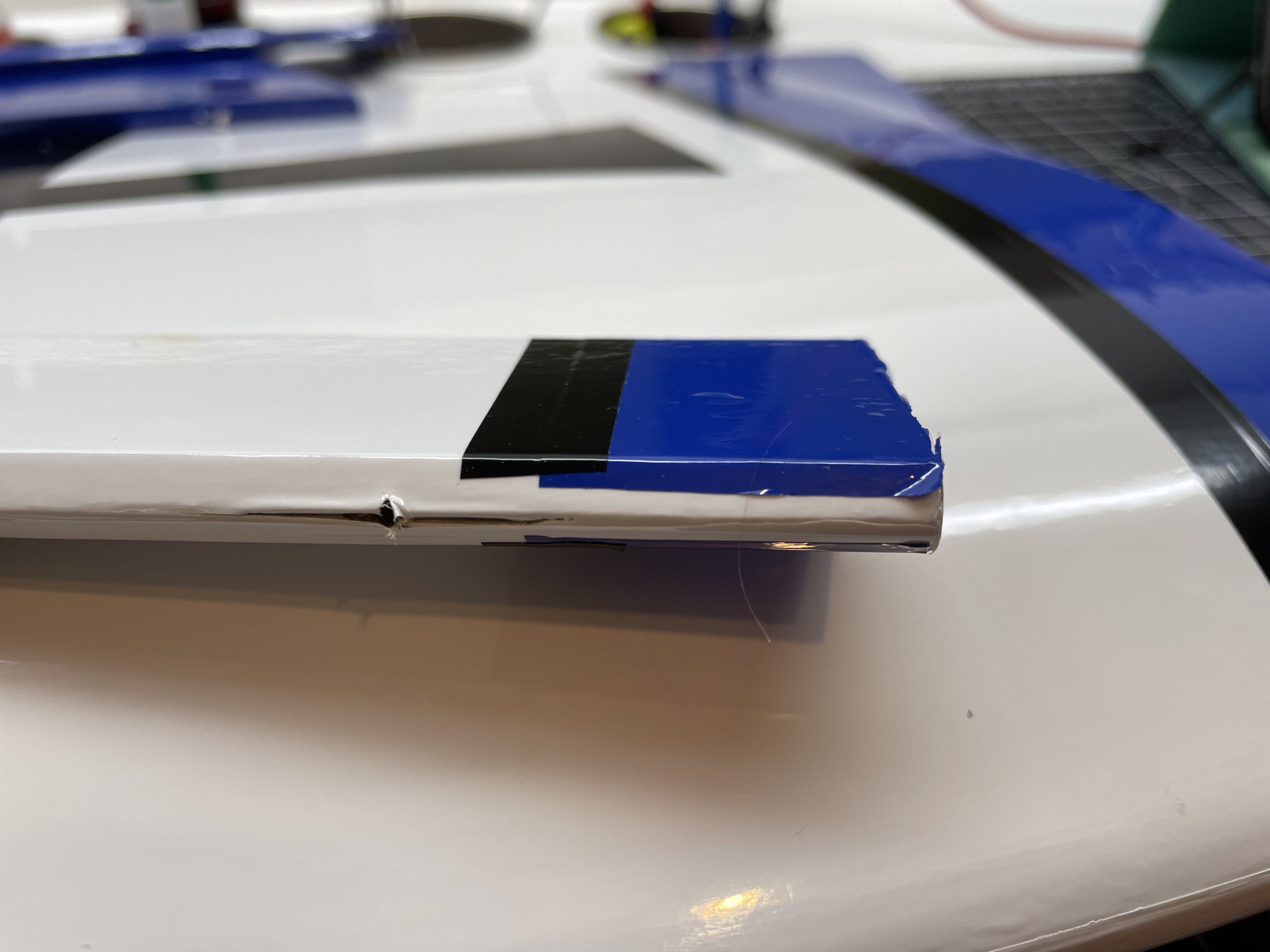Ok, I went ahead and got one from Gator RC once they came back in stock. I completed the assembly a couple of days ago and although I have yet to fly it, here are some initial thoughts and pics in case it helps someone out there make a decision:
Overall quality is somewhere between fair and good. The covering was applied decently with exception of trim, which was kinda sloppy. See pics.
Hardware quality ranges between ygtbkm trash and awesome. Cheap metric phillips screws/blind nuts for engine mounting were replaced by standard hex bolts and blind nuts. The landing gear legs are BEEFY and right off the larger Great Planes Giant Ugly Stick, albeit with slightly different bends. Hold those two sets of gear together and you’ll see the obvious relationship. The axles are more beefy than anything I’ve seen elsewhere. The wheels are so-so. Control rods and clevises are very fine threaded, metric, and more than up to the job.
Instructions are vague enough in a couple of places that they’d give a first-time builder fits, but more than adequate for most.
Most pics I’ve seen show either a painted or covered (?) firewall. Mine however was sealed but unpainted. The raw wood look on the firewall was not for me, and neither were the unpainted landing gear. I fly electric, so a few minutes with a rattle can solved both issues and the whole appearance is much better now IMO.
The above minor points aside, I have four real issues with this ARF.
1) It is significantly heavier than the quoted 7.7 lbs. The airframe before engine, mounts, or Rx battery came in at 6 lbs even in tail wheel configuration, leaving only 1.7 lbs available for nose gear, engine, prop, fuel tank, fuel, and rx battery if one is banking on making advertised spec. Being electric, mine is understandably even heavier than a gasser would be and comes in at 9.6 lbs all up, including the 6S 5.2A battery. I am not flying a separate rx battery, choosing instead to use the ESC’s BEC and a separate BEC off of the motor’s battery for redundancy. There’s a ton of wing area though, so the overall performance should be fine with my EFL Power 60 pulling 1250-1800W, depending on the prop. Note that I saved considerable weight by IGNORING the instructions (the weight could have easily ballooned to approx 11 lbs) as follows…
2) The kit includes and instructions call for use of 2.5” stand-offs for electric installations. This is absolutely ygtbkm territory as the model is already very nose heavy in electric configuration (and I strongly suspect would be in gasser mode as well). Even after discarding the standoffs and mounting my motor to a (modified) firewall, the starting point for location of my 5.2A 6S battery is several inches back from the firewall, placing the aft end of the battery well behind the “fuel compartment” and aft of the leading edge of the wing. If I’d installed the motor and ESC 2.5” forward, there’s no doubt that I would have been forced to increase the overall weight further by placing lead in the tail to achieve anything close to a reasonable CG.
3) While the front hatch is well done and convenient for the electric option, there are no provisions for battery mounting. None. Bring your own Velcro straps and/or other battery hold-down methodologies, especially for the aft end of the battery since it’s inconveniently out of sight behind the rear battery (fuel tank) compartment bulkhead. I will post later pics showing my final battery location and mounting method after flight testing.
4) There’s no built-in firewall thrust offsets for either pitch or yaw, as is so common elsewhere. The firewall is strictly squared off with the longitudinal axis. Plan then on lots of elevator and rudder inputs with power changes unless you offset the thrust line on your own. I got around this by making my own accommodations to easily ‘tune’ the thrust line in both pitch and yaw, via a variable firewall in front of the stock firewall. More on this later after flight testing.
The Hangar-9 Ultra in 60 size is significantly smaller, undoubtedly lighter, and may be a better overall choice as some have suggested above. The hangup for me there is entirely subjective, as I personally just can’t stand the looks of the H9 variant.
Wish me luck during maiden and tuning. I will report back here after that with final thoughts on the thrust line and battery mounting/CG etc.



